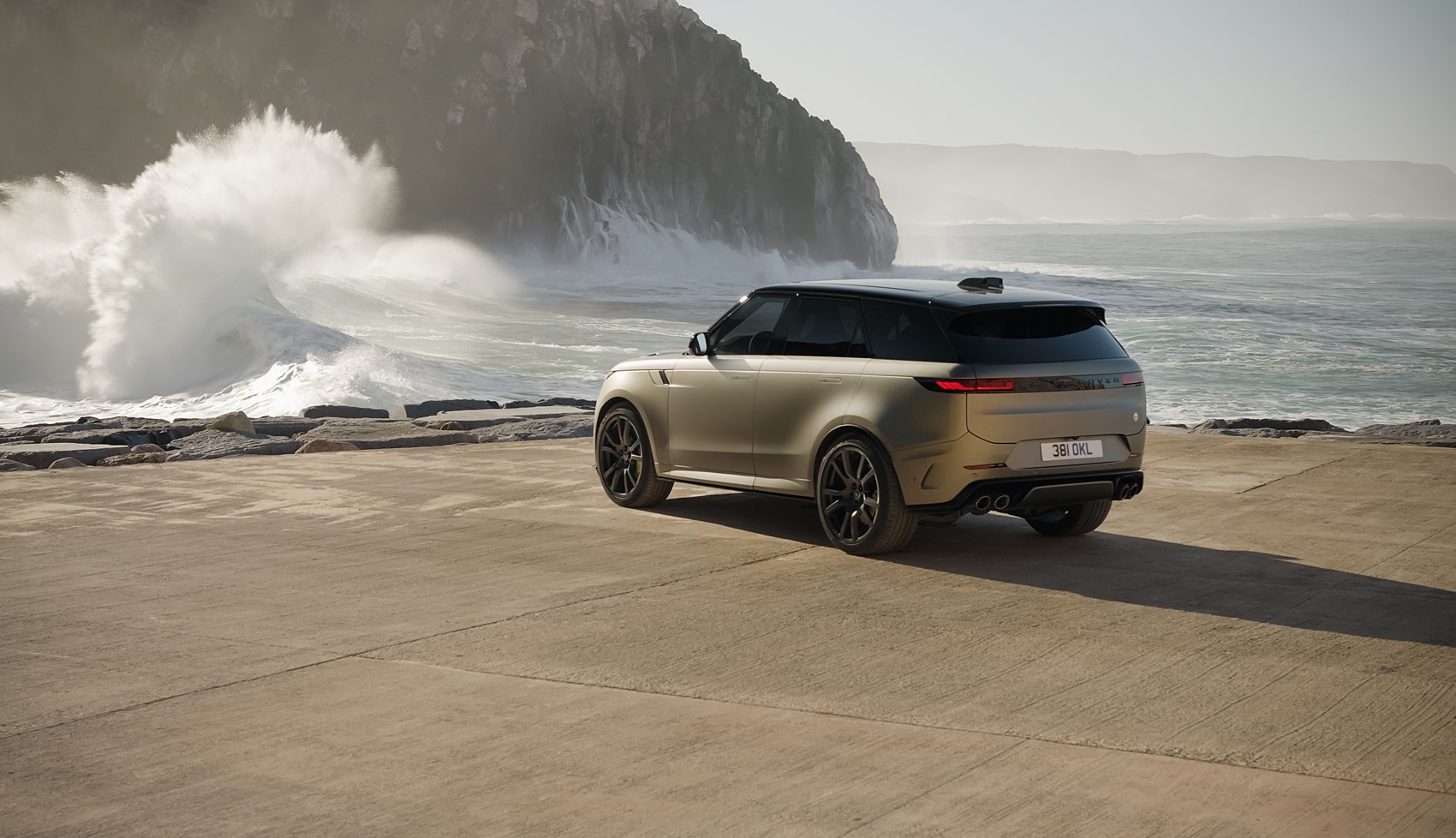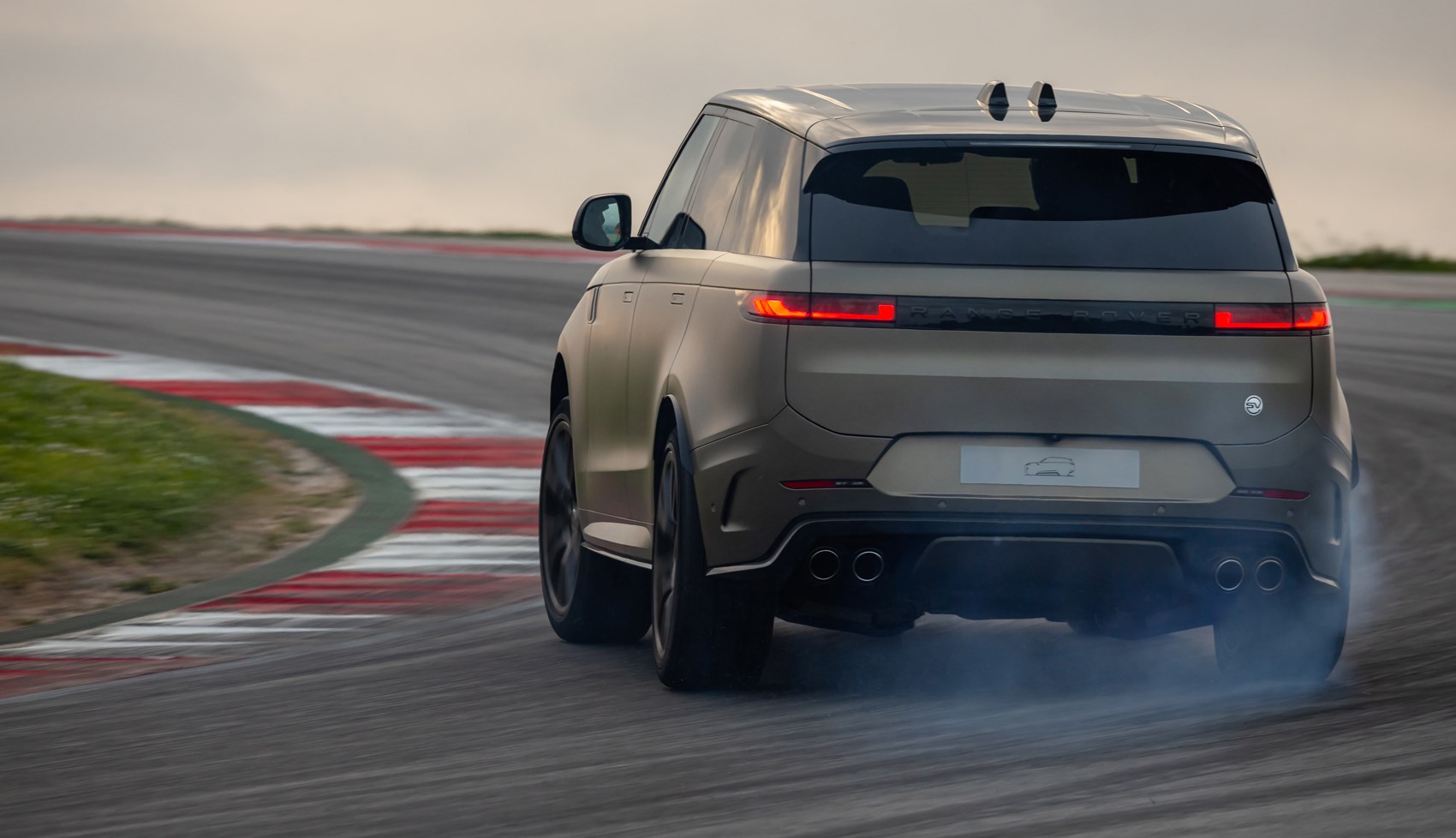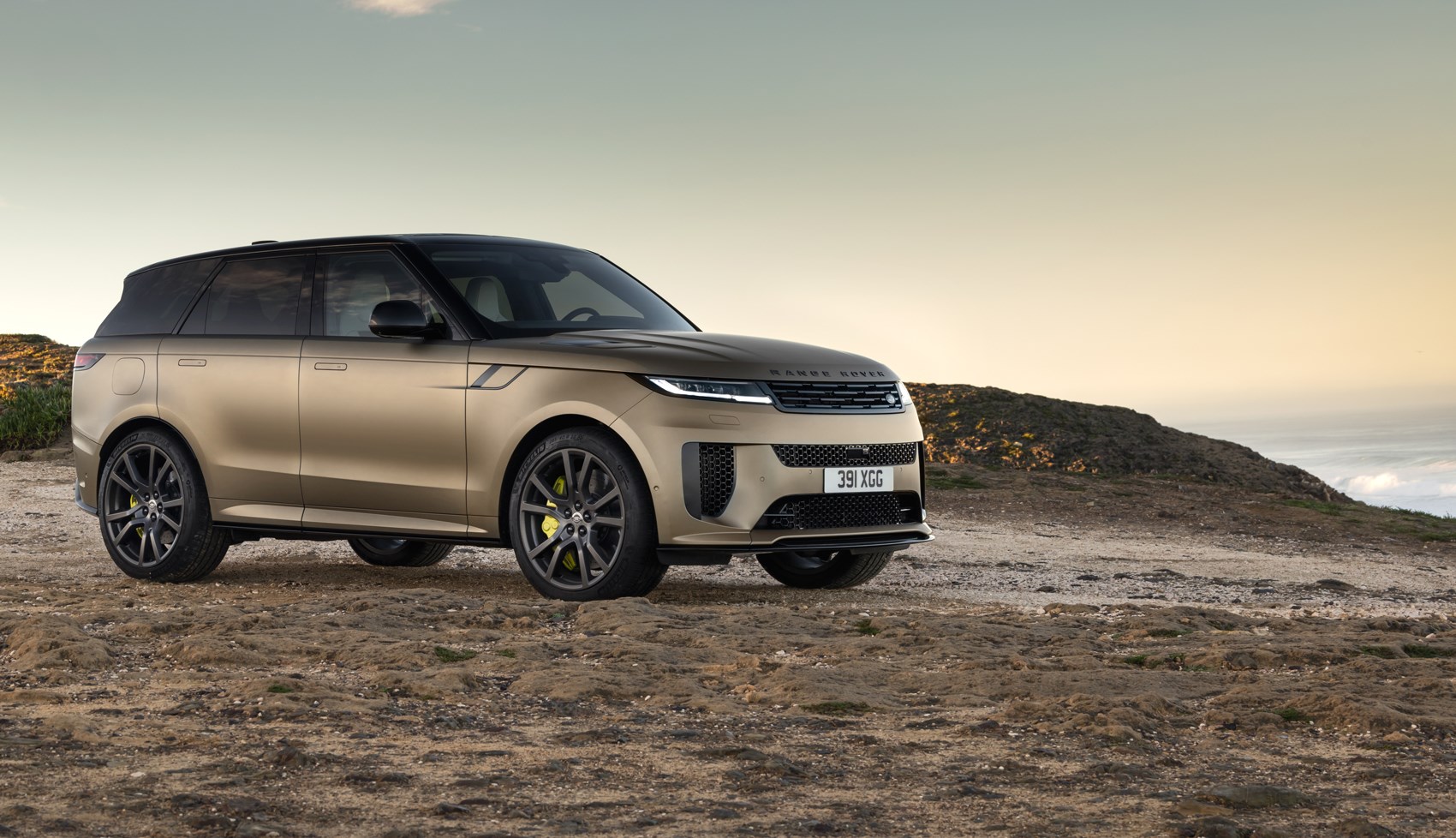► JLR’s flagship, V8 super-SUV driven
► Significant performance upgrades for this generation
► SV is huge and heavy, but well-sorted and fun
Don’t make the mistake of thinking that in dropping the ‘R’ from the SV badge the flagship Range Rover Sport is any less expensive or capable. You’d be wrong.
The old SVR was a proper thug’s car. Great to drive, it was chintzier than a footballer’s wedding on the inside and boasted a supercharged V8 soundtrack on the outside – a nightmare when you were trying to fly under the radar on plod’s dartboard, it did at least do a nice line in menacing. For this generation, JLR has turned up the class and the finer details, as well as injecting even more athleticism into the current-shape Range Rover Sport’s frame. It has to if its £171,460 asking price can really cut it with the likes of Bentley’s Bentayga V8, Aston DBX or Lamborghini’s Urus.
So, how has the SV been improved this time?

The design team, for a start, has tried harder. The SV has a deeper, squarer front bumper than a regular Sport, new side vents on the front wings, four round tailpipes and subtle rear arch extensions to legalise the pronounced negative camber of the 23-inch rear wheels, which are wider than the fronts for the first time on a Range Rover.
The new 4.4-litre twin-turbo V8 engine is lifted from BMW’s X5M and makes a stack more power than the SVR ever could. That SVR – the fastest Range Rover ever when launched in 2015 – pumped out 543bhp (later bumped to 567bhp), could reach 62mph in 4.7sec and topped out at 162mph. The SV makes 626bhp, stomps to 62mph in 3.8sec and is good for 180mph.
First Edition cars – the only SV available for the 2024 model year, and limited to 550 UK cars that are all spoken for – also get numerous carbon touches including a surprisingly classy no-cost-option carbon bonnet with visible weave in the centre section that we suspect will be relegated to the options list when the normal, and less expensive, SV is released this summer. Can’t get enough of composites? Carbon wheels (£6900) and brakes (£7000) are also available on the First Edition, and are collectively worth a 70kg weight saving, but neither was fitted to our car. Inside, Land Rover’s new Body and Soul seats use hidden speakers that send vibrations matched to your own choice of music though the chair to your body.

Standard-fit rear-wheel steering helps disguise the vast real estate between the front and rear axles. It’s a feature available on some lesser RR Sports, too, but it’s configured very differently here. While the rear wheels still do the usual four-wheel-steer trick of working out of phase (turning the opposite way to the front wheels) at lower speeds and in phase (the same way as the fronts) at higher speeds, the switchover point is much higher on the SV, coming in beyond 80mph rather than 31mph. Throw in a much faster steering rack at the pointy end and you’ve got the makings of a car that already feels strangely agile given its bulk.
But the SV has a trick up its wheelarches. It’s called 6D suspension and consists of four diagonally interconnected dampers, joined by a full 25 metres of pipework that allows Land Rover to ditch conventional anti-roll bars altogether. The benefits in wheel articulation suggest the tech will be very useful in dirt-biased LR vehicles, but for now the firm only wants to talk about how it’s being used to radically upscale the Sport’s dynamic ability.
How does all of this performance engineering work on the road, then?
In comfort mode, for the first few miles, the SV initially impresses more with its ride comfort than its body control. There’s enough roll control that it doesn’t lurch about awkwardly when you twist that quick steering, but beyond the smaller inputs needed to change direction it doesn’t feel hugely different to any other well-sorted SUV. Tidy, together, but very obviously a heavy car with a high centre of gravity. But then you reach for the R button on the steering wheel, give it a prod, and the SV suddenly feels like it’s halved in weight and height.

Let’s not get ahead of ourselves, though. There are actually two mode alternatives to Comfort (three if you count the Mud and Ruts off-road mode) if you reach your hand over to the Pivi Pro infotainment screen to switch things up, rather than reach for that steering-wheel button. The first is Dynamic, which you’ll also find on other Sports, and SV mode, which you won’t. The temptation is to jump straight into SV mode, though even the LR chassis engineer who spent three years honing the system admits it’s better suited to fast, smooth German roads than Portugal’s often scrappy, pock-marked curves.
So we’ll work our way up there. The difference between Comfort and Dynamic is obviously more pronounced in the SV than in lesser Sports because of the new dampers, and with Dynamic toggled on you can instantly feel the extra steering weight as you roll into a corner, and the extra body support present when that steering input takes effect. You can mix and match various settings in some of the modes, tweaking the steering weight, the level of stability control intervention and also the sound from the active exhaust system.

That new engine, meanwhile, is a great motor: smooth, effortlessly punchy in the mid-range – even when faced with the SVR’s gargantuan 2560kg kerbweight – and unobtrusive when you’re just mooching. The mild-hybrid system’s starter-generator is so slick the engine fires up almost without you even realising in traffic.
That last trait hardly sounds like the kind of thing that’s likely to appeal to buyers of the old SVR, but maybe that’s the point. The new SV has a much greater bandwidth, being far more capable of playing the part of luxury SUV on those occasions when the red mist is still firmly above the clouds. But it has more breadth at the other end, too. Cycle up past Dynamic and to its namesake mode, and the SV is capable of covering ground at the sort of speed that drivers of ordinary Range Sports couldn’t begin to comprehend.
Even on the standard all-season rubber, rather than the summer-biased Michelin Pilot Sport 5s that will be available next year, and on damp asphalt, it bites hard as you turn into bends, letting you lean first on the front, then on the rear axle. Now, with the ride height dropped a further 25mm on top of the 10mm reduction the SV already enjoys, and with the damping tightened even more than before, roll is almost eliminated. So are pitch under acceleration and dive when thumping on the incredible brakes.

The absence of body movement, and resulting lack of mental cues, is almost disconcerting at first. But once you learn to trust the SV the zippy steering rack really starts to make sense. You can string whole sequences of bends together with the faintest jink of your wrists, and if you switch the ESP fully out –something not possible in Dynamic mode – you can even slide the thing around.
And, if you’re brave enough, the SV will hold its own on track. There’s no danger of the SVR embarrassing something like a caged 911 or a carbon-bodied KTM, but it certainly doesn’t embarrass itself either. If you’ve got the balls, a corner entry on a trailing throttle will set the back end sliding, and a bootful of right pedal at the apex will keep the slide alive on the way out. Or you can play it neat and test your neck with more than 1.1g of cornering forces, a hefty 22 per cent more than the old SVR delivered.
Range Rover Sport SV: verdict

SUVs shouldn’t be, and normally aren’t, this fun, this sorted, in this kind of environment. And if we’re honest, they don’t need to be. The £114k Autobiography P550e PHEV or superb D350 diesel will suit most drivers better, and their slower steering gives a much more relaxed feel at the expense of some agility. They’re certainly better value. But if you’ve developed a more cultured palate since buying your old SVR and need something that can outrun the fuzz almost anywhere in the world, the SV should be on your shortlist.